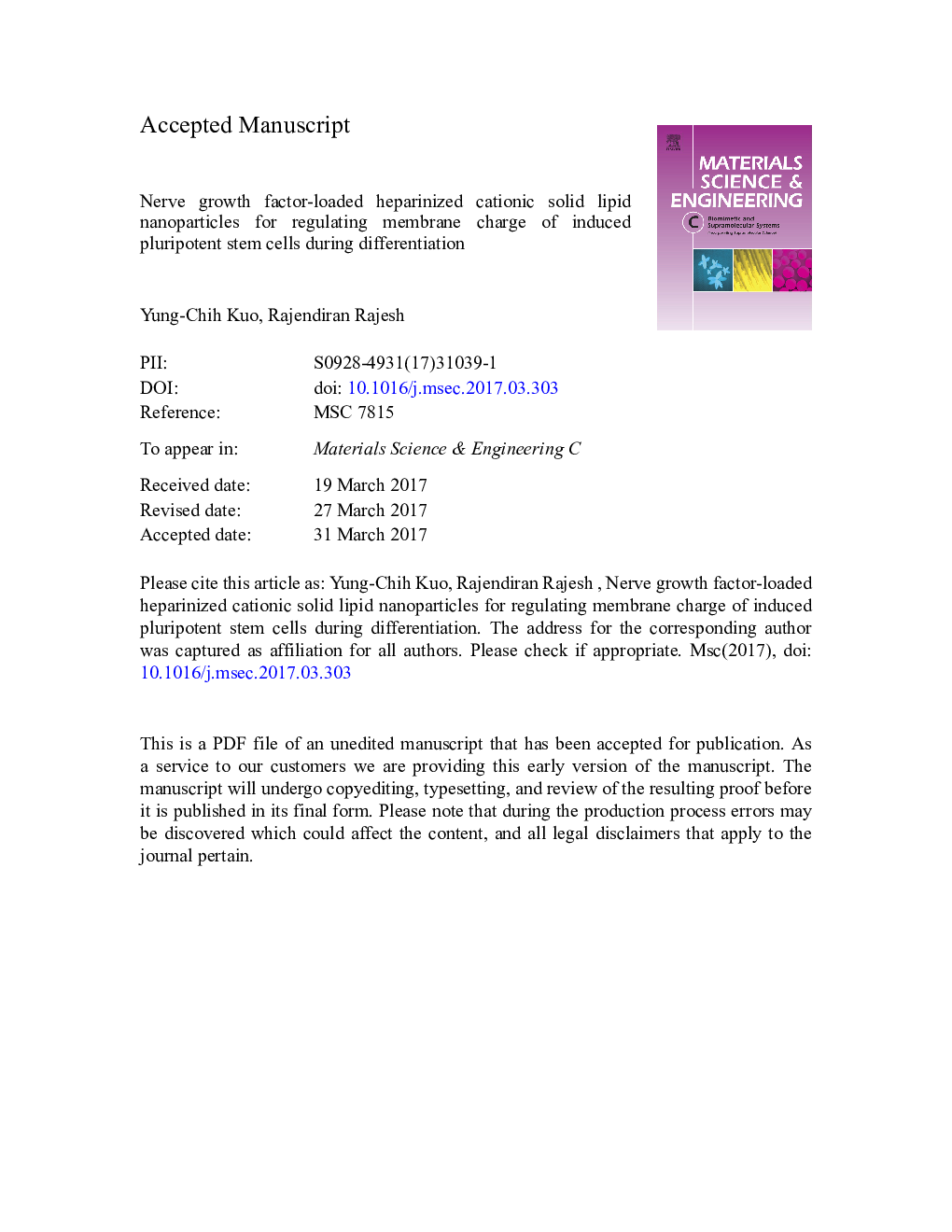| Article ID | Journal | Published Year | Pages | File Type |
|---|---|---|---|---|
| 5434568 | Materials Science and Engineering: C | 2017 | 42 Pages |
Abstract
Nerve growth factor (NGF)-loaded heparinized cationic solid lipid nanoparticles (NGF-loaded HCSLNs) were developed using heparin-stearic acid conjugate, cacao butter, cholesterol, stearylamine (SA), and esterquat 1 (EQ 1). The effect of cationic lipids and lipid matrix composition on the particle size, particle structure, surface molecular composition, chemical structure, electrophoretic mobility, and zeta potential of HCSLNs was investigated. The effect of HCSLNs on the membrane charge of induced pluripotent stem cells (iPSCs) was also studied. The results indicated that the average diameter of HCSLNs was 90-240Â nm and the particle size of HCSLNs with EQ 1 was smaller than that with SA. The zeta potential and electrophoresis analysis showed that HCSLNs with SA had a positively charged potential and HCSLNs with EQ 1 had a negatively charged potential at pHÂ 7.4. The high-resolution transmission electron microscope confirmed the loading of NGF on the surface of HCSLNs. Differentiation of iPSCs using NGF-loaded HCSLNs with EQ 1 exhibited higher absolute values of the electrophoretic mobility and zeta potential than differentiation using NGF-loaded HCSLNs with SA. The immunochemical staining of neuronal nuclei revealed that NGF-loaded HCSLNs can be used for differentiation of iPSCs into neurons. NGF-loaded HCSLNs with EQ 1 had higher viability of iPSCs than NGF-loaded HCSLNs with SA. NGF-loaded HCSLNs with EQ 1 may be promising formulation to regulate the membrane charge of iPSCs during neuronal differentiation.
Keywords
Related Topics
Physical Sciences and Engineering
Materials Science
Biomaterials
Authors
Yung-Chih Kuo, Rajendiran Rajesh,
